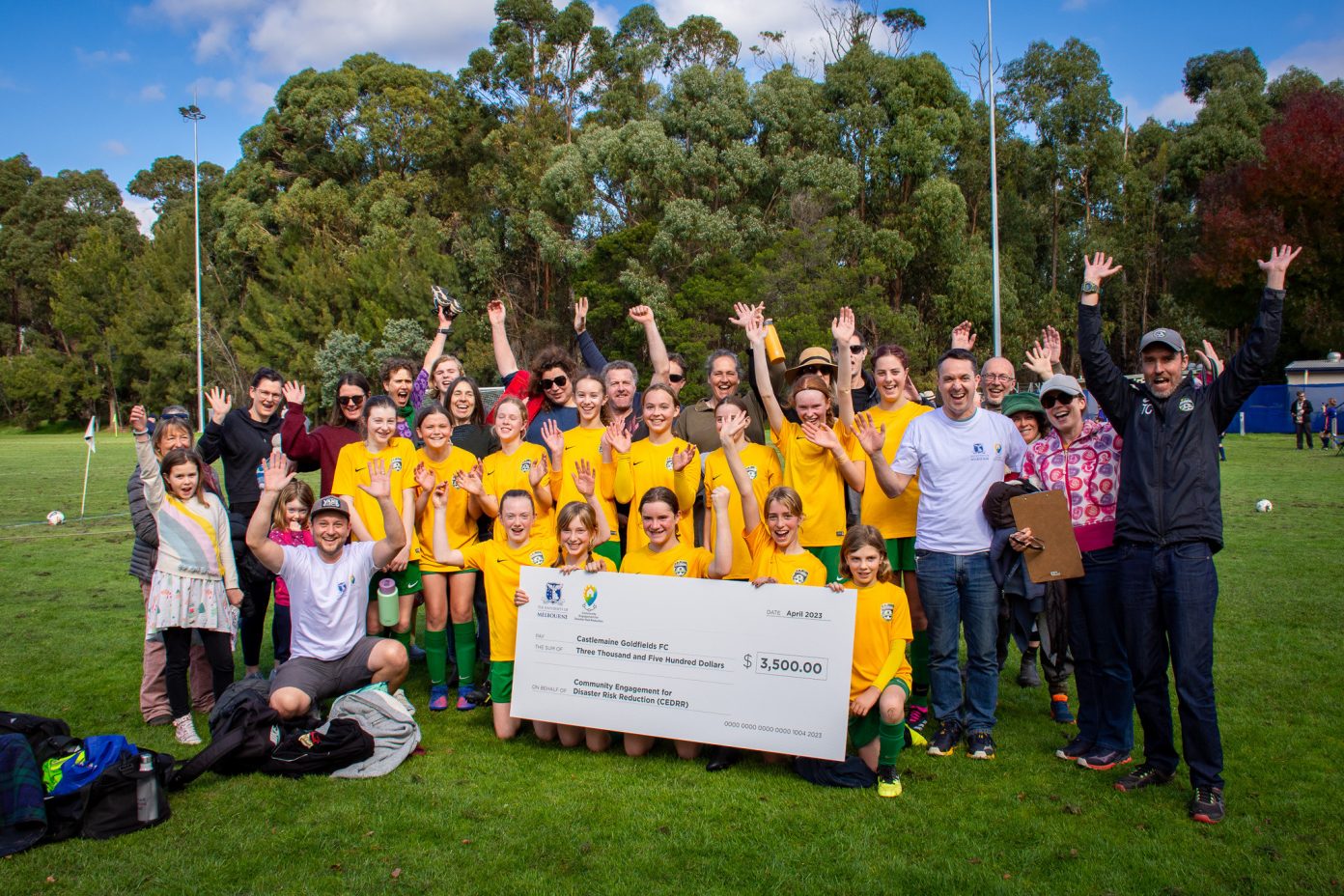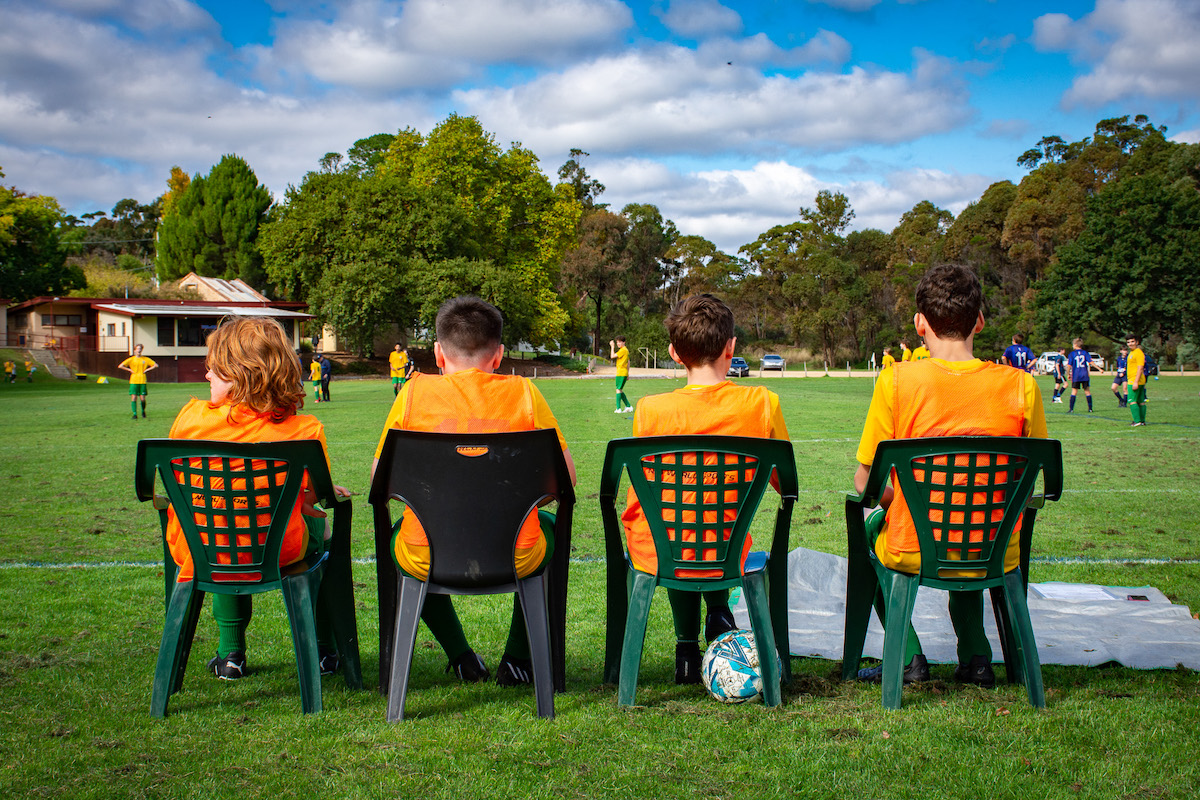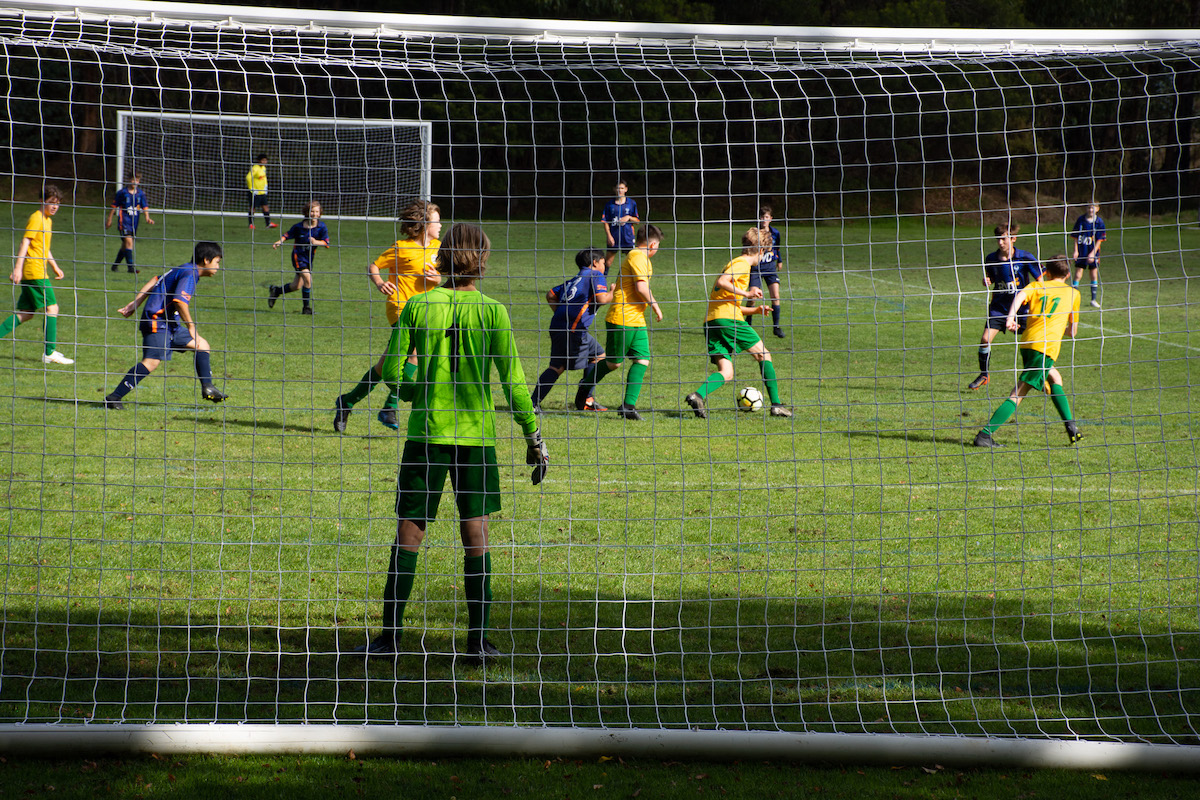Mt Alexander Case study: Partnering with community groups
Overview
In November of 2022 the CEDRR team partnered with the Goldfields Football club and the Castlemaine Girl Guides to invite their members to participate in the project. This approach drew on pre-existing relationships with the club to organise a willingness to help the research team trial our engagement approach with a larger group. Each club sent out invitations to their members through email lists and club events, asking members to sign up to participate in an engagement. Participants were also signed up on football game days by members of the research team.
The approach also trialled a new approach to signing up participants, in which we compensated community groups whose members participate. In this way, CEDRR attempted to ‘double’ our contributions to community: both through participation in the project and by funding non-profit community groups.
Impact
In total, 111 participants completed the initial engagement, with 88 of these participants also completing the follow up engagement.
Members of the team then met with the clubs in 2023 to provide the funding arising from participation in engagements.


The Castlemaine Mail local newspaper also wrote an article about the Goldfields Football Club’s participation in our project.
Measuring impact through Learning, Action & Spillovers
CEDRR has developed a model to measure impact which focuses on learning, action & spillovers (for more detail, see our model for impact page).
Learning
More than half of participants said they learned something, such as becoming more aware of actions that they could take to reduce their flood risk, taking more ownership over these tasks, or feeling better prepared for future emergencies. Several participants mentioned appreciating the opportunity to reflect on the risks that they felt were relevant to their household.
Action
Almost half of participants who completed follow up engagements took risk reduction actions. Examples of actions taken include creating an emergency plan in preparation for extreme weather events, cleaning or repairing gutters, changing the drainage profile of properties, or moving appliances to areas of their house that are less likely to flood.
Spillovers
In the follow up interviews, three quarters of participants reported telling family, friends or neighbours about the engagement. In general, participants thought that these conversations provided mutual benefits through an exchange of risk perceptions and experiences.
Research Findings
Summary of findings (for more detail see Research Outputs):
Knowledge of local risk varied across the community. Some participants demonstrated precise local knowledge about flood risk and the accuracy of flood mapping reviewed, whereas others raised concerns about families who had moved into the area more recently, questioning how prepared they were for flood and fire risk.
Many people are already taking action to reduce flood risk in their homes. When we spoke to people in the initial engagement, 51% had already taken actions including cleaning gutters, extending downpipes, and landscaping to improve drainage - such as digging trenches to drain water away from the house, and raising houses on stumps.
Participants found CEDRR engagements to be an enjoyable form of community engagement. 98% of participants who chose to participate in the follow up engagements believed the initial engagement was enjoyable. Several participants mentioned that they enjoyed the ‘softer’ model of engagement, which provides time to consider what they think they should do instead of being ‘told what to do’.
Participants often found CEDRR engagements to be useful. Over 50% of participants reported learning something or feeling more equipped to cope with future emergency situations. Others were happy to raise money for their club through an enjoyable conversation.
Participants took action to reduce flood risk in their homes after CEDRR engagements. 45% of participants who completed follow up engagements reported having taken risk reduction actions in their household.
Participation in CEDRR has spillover effects on the wider community. 75% of participants either spoke to people in their networks about the engagement or shared information and resources.
In our participants’ words
“I'm now more aware of the pre-emptive sort of things that I can do ahead of time that before I had always felt that a lot of things were out of my control.”
“I'm probably less likely to assume someone else's thought of it or someone else can handle it [flood risk] and probably will do my own research.”
“We [family] kind of discussed if something [climate emergency] was happening, and one of you got, you know, caught on the other side of weather events. What do you do? Where would you go?”
“Well, the gutters have all been changed. Yeah. The gutters were in the state of poor repair. So they're all brand new gutters around the house, and I did them myself this time.”
“And so the steps I've taken have been to look at alternative energy supply for what that so it's my gas, hot water and my gas heating, looking at using some of the government rebates that are available to move those appliances, one to electricity, but also to in terms of location to a location that they are less vulnerable.”
“We’re looking for another property or land at the moment and in front of mind, it's probably the first thing I'm thinking about is there a flood risk associated with this property?"
“So I reviewed my insurance policy and actually changed provider to include a better kind of comprehensive cover, and also did some minor kind of groundwork. Around my flight to sort of avoid sort of floods, problems in the future. Yeah, I did do a couple of things, actually.”
“I just spoke [to my brother] about this research project and I said that it sounds like that it's translational research. And I said that it was a really good moment to sit down and actually identify risk in my life and what I could do to kind of change some of what I was already doing and what I can do to change my risk profile and also how guilty I was in terms of I hadn't done certain things.”
“Yeah, no, it was more just the condition of my home and just in general conversation, sharing that with others who've been in the area, who might be have similar risks, or, or have completely different houses, but also highlighting for them that their risks are different because of their house.”

